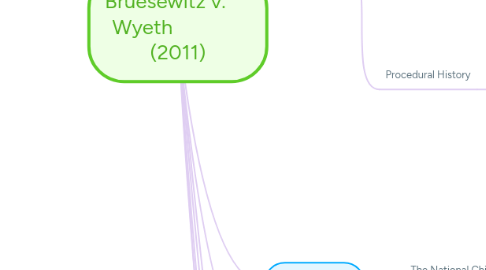
1. Influence
1.1. The outcome of the decision applies to any major vaccine manufacturers, including for instance Merck and Sanofi
2. Importance
2.1. The case of Bruesewitz v. Wyeth had a major impact on the healthcare industry in that it confirmed that vaccine manufacturers are not liable for vaccine-induced injury or even death, provided that the vaccines are accompanied by proper directions and warnings. The decision highlights the need of the vaccine manufacturers to ensure the formulation of appropriate directions and warnings when distributing the product to the clinics and hospitals, in order to escape their liability for any claims.
3. Impact
3.1. This decision was referred to in subsequent judgements mainly to reaffirm the rule of law, For example, in Mutual Pharmaceutical Co. v. Bartlett, 570 U.S. the arguments set out in Bruesewitz were used to confirm that generic drug manufactures cannot be held liable under state law for not adequately labeling medication when federal law prohibits them from changing the label from the original brand name drug.
3.1.1. Relevant reference also relates to Sebelius v. Cloer 569 US in which the case was referred to when deciding that an attorney may not charge a fee for services in connection with such a petition for compensation under the National Childhood Vaccine Injury Act of 1986, but a court may award attorney’s fees and costs incurred by a claimant in any proceeding on an unsuccessful petition, if that petition was brought in good faith.
4. Conclusion
4.1. The Supreme Court held that the design defect claims of the plaintiffs in relation to the vaccine were expressly preempted (invalidated) by the National Childhood Vaccine Injury Act of 1986
5. Facts
5.1. Parties
5.1.1. Russell Bruesewitz et al.
5.1.2. Wyeth
5.2. What happened
5.3. The daughter of the main petitioners in the case, Hannah Bruesewitz, received Wyeth's Tri-Immunol DTP vaccine as part of her childhood immunizations. The petitioners filed a suit in the "Vaccine Court" claiming that their daughter’s seizures and subsequent developmental problems were a result of the vaccine
5.4. Procedural History
5.4.1. They subsequently sued Wyeth in the Pennsylvania state court, but the case was moved to the local federal court, which held that the claim was invalidated by a section of the National Childhood Vaccine Injury Act of 1986
5.4.2. The Bruesewitz's petition was dismissed for failure to prove a link between the vaccine and their daughter’s health problems.
5.4.3. This decision was later reaffirmed by the Third Circuit Court of Appeals. The case was subsequently heard by the Supreme Court.

